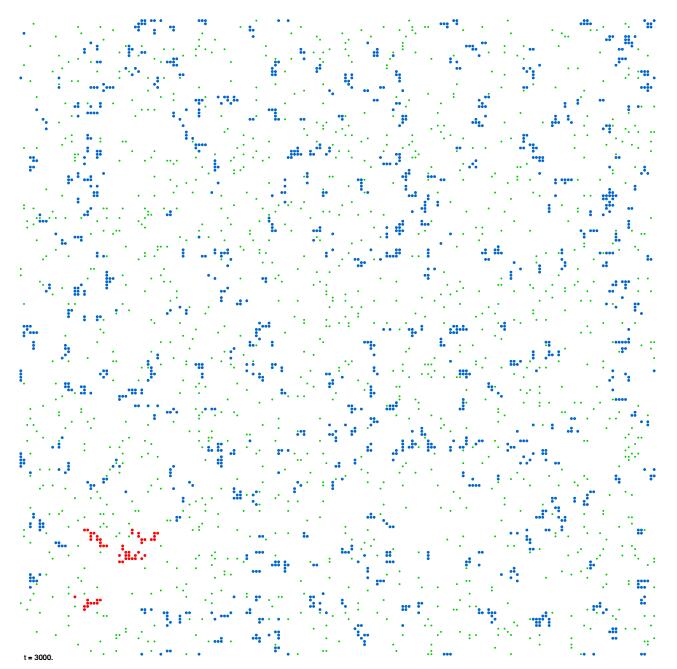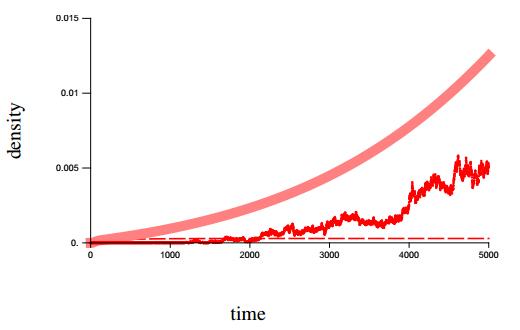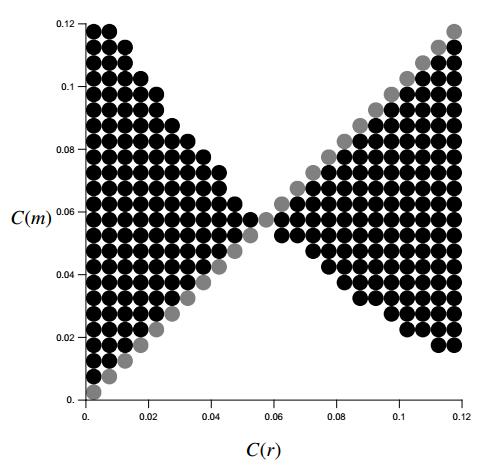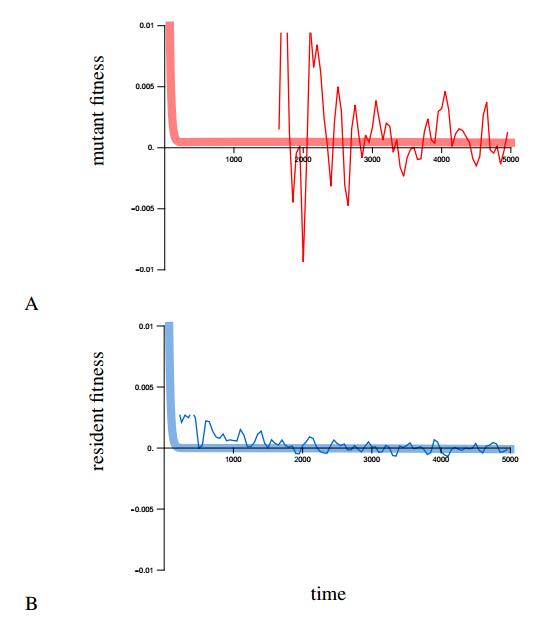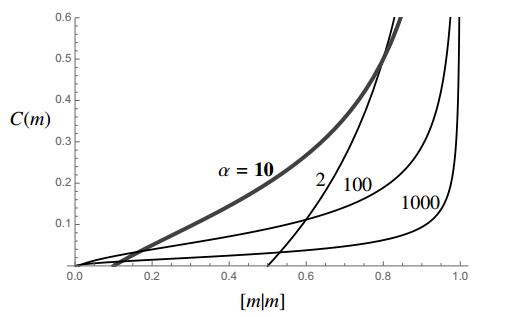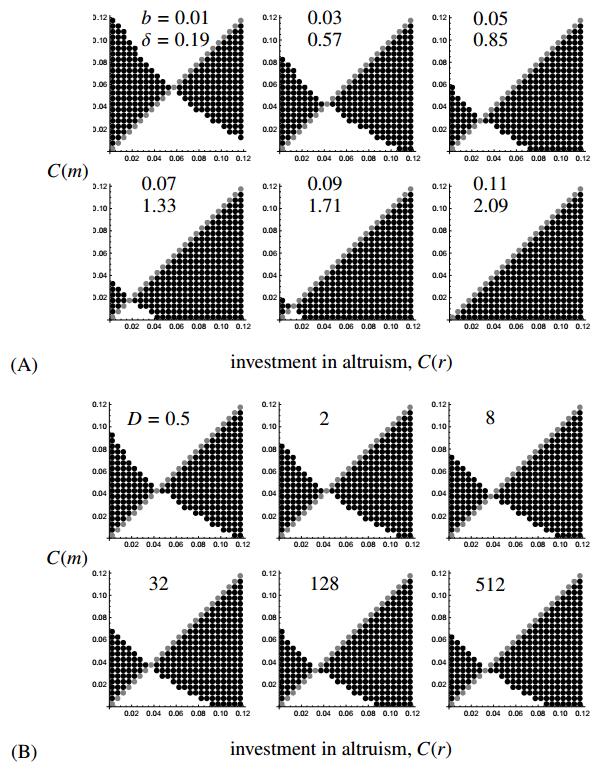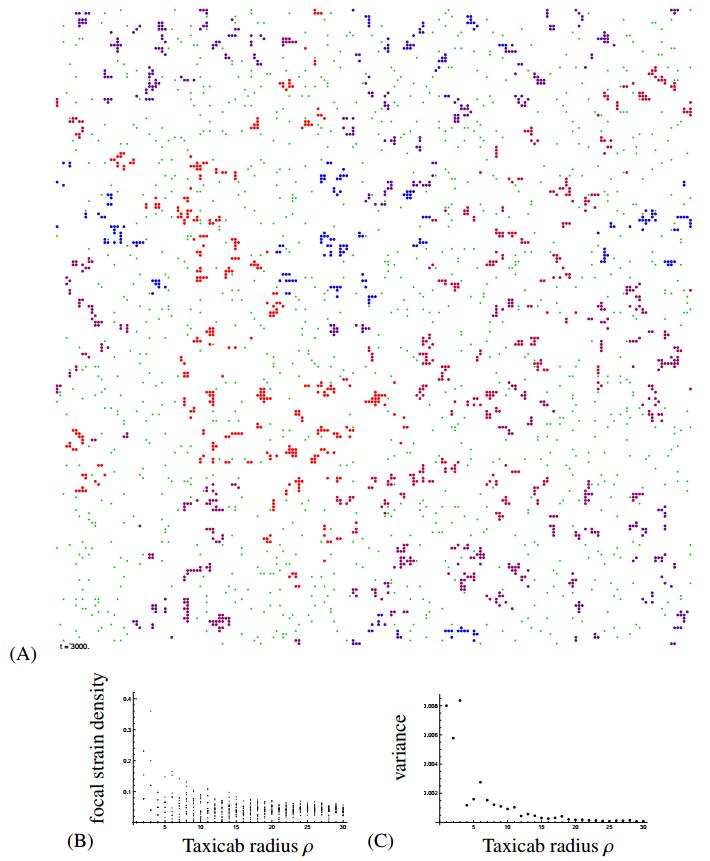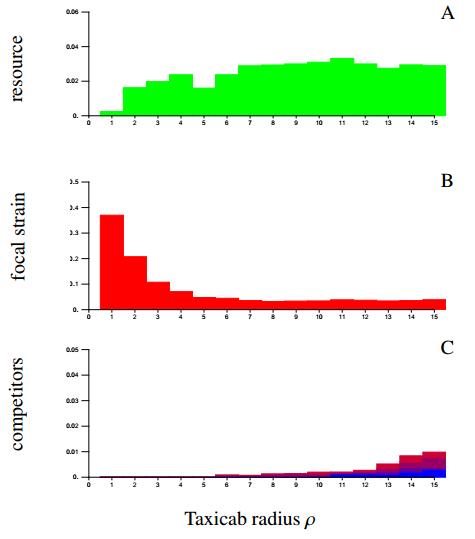| 1.
|
Musthafa O. Mavukkandy, Samantha A. McBride, David M. Warsinger, Nadir Dizge, Shadi W. Hasan, Hassan A. Arafat,
Thin film deposition techniques for polymeric membranes– A review,
2020,
610,
03767388,
118258,
10.1016/j.memsci.2020.118258
|
|
| 2.
|
A. V. Kalgin,
Structural relaxation in an amorphous phase of the thin-film nanogranular composite (x)Ni – (1–x)PNBZT,
2020,
561,
0015-0193,
1,
10.1080/00150193.2020.1736906
|
|
| 3.
|
Alexandru Oprea, Udo Weimar,
Gas sensors based on mass-sensitive transducers. Part 2: Improving the sensors towards practical application,
2020,
412,
1618-2642,
6707,
10.1007/s00216-020-02627-3
|
|
| 4.
|
Nathan C. Ou, Xiaoming Su, Duane C. Bock, Lisa McElwee-White,
Precursors for chemical vapor deposition of tungsten oxide and molybdenum oxide,
2020,
421,
00108545,
213459,
10.1016/j.ccr.2020.213459
|
|
| 5.
|
Bassiouny Saleh, Jinghua Jiang, Reham Fathi, Tareq Al-hababi, Qiong Xu, Lisha Wang, Dan Song, Aibin Ma,
30 Years of functionally graded materials: An overview of manufacturing methods, Applications and Future Challenges,
2020,
201,
13598368,
108376,
10.1016/j.compositesb.2020.108376
|
|
| 6.
|
Dalaver H. Anjum, I.A. Qattan, Shashikant Patole, Elhadj M. Diallo, Nini Wei, Henry Heidbreder,
Nano-characterization of silicon-based multilayers using the technique of STEM-EELS spectrum-imaging,
2020,
25,
23524928,
101209,
10.1016/j.mtcomm.2020.101209
|
|
| 7.
|
Jingye Li, Tianyu Pan, Jilei Wang, Shuangying Cao, Yinyue Lin, Bram Hoex, Zhongquan Ma, Linfeng Lu, Liyou Yang, Baoquan Sun, Dongdong Li,
Bilayer MoOX/CrOX Passivating Contact Targeting Highly Stable Silicon Heterojunction Solar Cells,
2020,
12,
1944-8244,
36778,
10.1021/acsami.0c09877
|
|
| 8.
|
Thywill Cephas Dzogbewu, Willie Bouwer du Preez,
Additive Manufacturing of Titanium-Based Implants with Metal-Based Antimicrobial Agents,
2021,
11,
2075-4701,
453,
10.3390/met11030453
|
|
| 9.
|
Olayinka Abegunde, Esther Akinlabi, Philip Oladijo,
Developing an empirical relationship for optimizing surface roughness of TiC thin film grown by magnetron sputtering using Taguchi analysis,
2020,
26,
22147853,
3282,
10.1016/j.matpr.2020.02.253
|
|
| 10.
|
Hugo A. Torres-Muro, Arturo Talledo-Coronado, Roberto Machorro-Mejía, José Ordoñez-Miranda, Manuel E. Guevara-Vera,
EFECTO DE LA TEMPERATURA DEL SUSTRATO EN LA RUGOSIDAD E ÍNDICE DE REFRACCIÓN EN EL VISIBLE E INFRARROJO CERCANO DE PELÍCULAS DELGADAS DE NITRURO DE TANTALIO,
2020,
2500-8013,
37,
10.15446/mo.n61.86003
|
|
| 11.
|
Valeria De Matteis, Alessandro Cannavale, Ubaldo Ayr,
Titanium Dioxide in Chromogenic Devices: Synthesis, Toxicological Issues, and Fabrication Methods,
2020,
10,
2076-3417,
8896,
10.3390/app10248896
|
|
| 12.
|
Bryce I. Edmondson, Sunah Kwon, Chon H. Lam, J. Elliott Ortmann, Alexander A. Demkov, Moon J. Kim, John G. Ekerdt,
Epitaxial, electro‐optically active barium titanate thin films on silicon by chemical solution deposition,
2020,
103,
0002-7820,
1209,
10.1111/jace.16815
|
|
| 13.
|
S Pawłowski, J Plewako, E Korzeniewska,
Influence of the geometry of defects in textronic structures on their electrical properties,
2021,
1782,
1742-6588,
012027,
10.1088/1742-6596/1782/1/012027
|
|
| 14.
|
Tianyu Pan, Jingye Li, Yinyue Lin, Zhongying Xue, Zengfeng Di, Min Yin, Jilei Wang, Linfeng Lu, Liyou Yang, Dongdong Li,
Structural and optical studies of molybdenum oxides thin films obtained by thermal evaporation and atomic layer deposition methods for photovoltaic application,
2021,
32,
0957-4522,
3475,
10.1007/s10854-020-05094-9
|
|
| 15.
|
Iman Ahmed Younus, Anwar M. Ezzat, Mohammad M. Uonis,
Preparation of ZnTe thin films using chemical bath deposition technique,
2020,
6,
2055-0324,
165,
10.1080/20550324.2020.1865712
|
|
| 16.
|
Harrison Shagwira, F.M. Mwema, E.T. Akinlabi,
Severe plastic deformation-nanocoating for processing of biomaterials: A model for small-scale industry,
2020,
22147853,
10.1016/j.matpr.2020.11.245
|
|
| 17.
|
Sheila Devasahayam, Chaudhery Mustansar Hussain,
Thin-film nanocomposite devices for renewable energy current status and challenges,
2020,
26,
22149937,
e00233,
10.1016/j.susmat.2020.e00233
|
|
| 18.
|
Kazuya Kanasugi, Yasuharu Ohgoe, Masanori Hiratsuka, Hideki Nakamori, Akihiko Homma, Kenji Hirakuri,
Classification of DLC films for cell proliferation based on optical constants,
2021,
113,
09259635,
108266,
10.1016/j.diamond.2021.108266
|
|
| 19.
|
E. López-Fernández, J. Gil-Rostra, J. P. Espinós, A. R. González-Elipe, A. de Lucas Consuegra, F. Yubero,
Chemistry and Electrocatalytic Activity of Nanostructured Nickel Electrodes for Water Electrolysis,
2020,
10,
2155-5435,
6159,
10.1021/acscatal.0c00856
|
|
| 20.
|
Bipin D. Lade, Arti S. Shanware,
2020,
Chapter 6,
978-1-83880-253-0,
10.5772/intechopen.90918
|
|
| 21.
|
Joel G. Wright Jr, Holger Schmidt, Aaron R. Hawkins,
Effects of Post-Etch Microstructures on the Optical Transmittance of Silica Ridge Waveguides,
2020,
38,
0733-8724,
6280,
10.1109/JLT.2020.3012899
|
|
| 22.
|
T. Manimozhi, T. Logu, J. Archana, M. Navaneethan, K. Sethuraman, K. Ramamurthi,
Enhanced photo-response of CdTe Thin film via Mo doping prepared using electron beam evaporation technique,
2020,
31,
0957-4522,
21059,
10.1007/s10854-020-04618-7
|
|
| 23.
|
Vincenzo Guarino, Maria Letizia Focarete, Dario Pisignano,
2020,
9780128168653,
3,
10.1016/B978-0-12-816865-3.00001-9
|
|
| 24.
|
Mariana Fraga, Rodrigo Pessoa,
Progresses in Synthesis and Application of SiC Films: From CVD to ALD and from MEMS to NEMS,
2020,
11,
2072-666X,
799,
10.3390/mi11090799
|
|
| 25.
|
Mutawalli Bello, Subramani Shanmugan,
Achievements in mid and high-temperature selective absorber coatings by physical vapor deposition (PVD) for solar thermal Application-A review,
2020,
839,
09258388,
155510,
10.1016/j.jallcom.2020.155510
|
|
| 26.
|
M.A. Reddy, R. Shekhar, A.C. Sahayam, Paritosh Jain,
Graphite furnace atomic absorption spectrometric studies for the quantification of trace and ultratrace impurities in the semiconductor grade organic chemicals such as triethylborate, tetraethylorthosilicate and trimethylphosphate,
2021,
05848547,
106184,
10.1016/j.sab.2021.106184
|
|
| 27.
|
Anita Ioana Visan, Gianina Popescu-Pelin, Gabriel Socol,
Degradation Behavior of Polymers Used as Coating Materials for Drug Delivery—A Basic Review,
2021,
13,
2073-4360,
1272,
10.3390/polym13081272
|
|
| 28.
|
Briana A. Capistran, Gary J. Blanchard,
Spectroscopic Analysis of Cu(II)-Complexed Thin Films to Characterize Molecular-Level Interactions and Film Behavior,
2021,
0743-7463,
10.1021/acs.langmuir.1c00849
|
|
| 29.
|
SS Oladijo, ET Akinlabi, FM Mwema, Artemis Stamboulis,
An Overview of Sputtering Hydroxyapatite for BiomedicalApplication,
2021,
1107,
1757-8981,
012068,
10.1088/1757-899X/1107/1/012068
|
|
| 30.
|
Jyothi Gupta, Habibuddin Shaik, K. Naveen Kumar,
A review on the prominence of porosity in tungsten oxide thin films for electrochromism,
2021,
0947-7047,
10.1007/s11581-021-04035-8
|
|
| 31.
|
Anass Benayad, Diddo Diddens, Andreas Heuer, Anand Narayanan Krishnamoorthy, Moumita Maiti, Frédéric Le Cras, Maxime Legallais, Fuzhan Rahmanian, Yuyoung Shin, Helge Stein, Martin Winter, Christian Wölke, Peng Yan, Isidora Cekic‐Laskovic,
High‐Throughput Experimentation and Computational Freeway Lanes for Accelerated Battery Electrolyte and Interface Development Research,
2022,
12,
1614-6832,
2102678,
10.1002/aenm.202102678
|
|
| 32.
|
Yayuk Astuti, R. A. Yunita Suci Rahayu, Esens Estetika,
2023,
chapter 10,
9781668456293,
167,
10.4018/978-1-6684-5629-3.ch010
|
|
| 33.
|
Marius Stoian, Thomas Maurer, Salim Lamri, Ioana Fechete,
Techniques of Preparation of Thin Films: Catalytic Combustion,
2021,
11,
2073-4344,
1530,
10.3390/catal11121530
|
|
| 34.
|
Hailu Gemechu Benti, Abraham Debebe Woldeyohannes, Belete Sirahbizu Yigezu, Yuanshi Li,
Improving the Efficiency of Cutting Tools through Application of Filtered Cathodic Vacuum Arc Deposition Coating Techniques: A Review,
2022,
2022,
1687-8442,
1,
10.1155/2022/1450805
|
|
| 35.
|
Md. Golam Sarower Rayhan, M. Khalid Hasan Khan, Mahfuza Tahsin Shoily, Habibur Rahman, Md. Rakibur Rahman, Md. Tusar Akon, Mahfuzul Hoque, Md. Rayhan Khan, Tanvir Rayhan Rifat, Fahmida Akter Tisha, Ibrahim Hossain Sumon, Abdul Wahab Fahim, Mohammad Abbas Uddin, Abu Sadat Muhammad Sayem,
Conductive Textiles for Signal Sensing and Technical Applications,
2022,
4,
2624-6120,
1,
10.3390/signals4010001
|
|
| 36.
|
Tung Thanh Bui, Tien Minh Huynh, Diep Ngoc Le, Phuoc Van Tran, Chien Mau Dang,
Supporting plasma processes for fabrication of n-doped nano-crystalline silicon thin film on low-cost glass substrates,
2021,
194,
0042207X,
110622,
10.1016/j.vacuum.2021.110622
|
|
| 37.
|
Duygu Kuru, Alev Akpinar Borazan, Nuran Ay,
Synthesis of Boron Nitride Nanosheets/Polyvinyl Butyral Thin Film: An Efficient Coating for UV Protection of Extra Virgin Olive Oil in Glass Bottles,
2022,
72,
1661-9897,
37,
10.4028/p-nly582
|
|
| 38.
|
Rommi Adany Putra Afauly, Muhammad Faiz Habibi, Bentang Arief Budiman,
2021,
Review on Manufacturing Methods of Functionally Graded Material of Solid-State Batteries,
978-1-6654-2362-5,
236,
10.1109/ISMEE54273.2021.9774272
|
|
| 39.
|
Thokozani Justin Kunene, Lagouge Kwanda Tartibu, Kingsley Ukoba, Tien-Chien Jen,
Review of atomic layer deposition process, application and modeling tools,
2022,
62,
22147853,
S95,
10.1016/j.matpr.2022.02.094
|
|
| 40.
|
Awais Akhtar, Haihui Ruan,
Review on thin film coatings for precision glass molding,
2022,
30,
24680230,
101903,
10.1016/j.surfin.2022.101903
|
|
| 41.
|
Kateřina Tenorová, Ruta Masteiková, Sylvie Pavloková, Klára Kostelanská, Jurga Bernatonienė, David Vetchý,
Formulation and Evaluation of Novel Film Wound Dressing Based on Collagen/Microfibrillated Carboxymethylcellulose Blend,
2022,
14,
1999-4923,
782,
10.3390/pharmaceutics14040782
|
|
| 42.
|
Soo Ouk Jang, Changhyun Cho, Ji Hun Kim, In Je Kang, Hyonu Chang, Hyunjae Park, Kyungmin Lee, Dae Gun Kim, Hye Won Seok,
Microwave Plasma Assisted Aerosol Deposition (μ-PAD) for Ceramic Coating Applications,
2022,
5,
2571-6131,
1174,
10.3390/ceramics5040083
|
|
| 43.
|
Guanlin Du, Le Li, Xinbo Yang, Xi Zhou, Zhenhuang Su, Peihong Cheng, Yinyue Lin, Linfeng Lu, Jilei Wang, Liyou Yang, Xingyu Gao, Xiaoyuan Chen, Dongdong Li,
Improved V
2
O
X
Passivating Contact for
p
‐Type Crystalline Silicon Solar Cells by Oxygen Vacancy Modulation with a SiO
X
Tunnel Layer
,
2021,
8,
2196-7350,
2100989,
10.1002/admi.202100989
|
|
| 44.
|
María Virginia Roldán, Estanislao Porta, Alicia Durán, Yolanda Castro, Nora Pellegri,
Development of photocatalysts based on TiO
2
films with embedded Ag nanoparticles
,
2022,
13,
2041-1286,
429,
10.1111/ijag.16575
|
|
| 45.
|
Paikhomba Loktongbam, Debasish Pal, A. K. Bandyopadhyay, Chaitali Koley,
A Brief Review on mm-Wave Antennas for 5G and Beyond Applications,
2022,
0256-4602,
1,
10.1080/02564602.2022.2121771
|
|
| 46.
|
Alessia Romani, Paolo Tralli, Marinella Levi, Stefano Turri, Raffaella Suriano,
Metallization of Recycled Glass Fiber-Reinforced Polymers Processed by UV-Assisted 3D Printing,
2022,
15,
1996-1944,
6242,
10.3390/ma15186242
|
|
| 47.
|
Mithlesh Kumar Mahto, Adarsh Kumar, Avinash Ravi Raja, Meghanshu Vashista, Mohd Zaheer Khan Yusufzai,
Friction stir cladding of copper on aluminium substrate,
2022,
36,
17555817,
23,
10.1016/j.cirpj.2021.10.004
|
|
| 48.
|
BA. Anandh, R. Sakthivel, A. Shankar Ganesh, S. Subramani, A.T. Rajamanickam,
Impact of Aluminium on ZnO Thin Films for Antimicrobial Activity,
2021,
33,
0975427X,
2393,
10.14233/ajchem.2021.23342
|
|
| 49.
|
Ammar Qasem, B. Alshahrani, H. A. Yakout, Hebat-Allah S. Abbas, E. R. Shaaban,
Tuning structural, optical, electrical and photovoltaic characteristics of n-type CdS1−xSbx layers for optimizing the performance of n-(CdS:Sb)/p-Si solar cells,
2021,
127,
0947-8396,
10.1007/s00339-021-04999-4
|
|
| 50.
|
Fredrick M. Mwema, Tien-Chien Jen, Pavel Kaspar,
Fractal Theory in Thin Films: Literature Review and Bibliometric Evidence on Applications and Trends,
2022,
6,
2504-3110,
489,
10.3390/fractalfract6090489
|
|
| 51.
|
M. I. El-Henawey, M. Kubas, A. El-Shaer, E. Salim,
The effect of post-annealing treatment on the structural and optoelectronic properties of solution-processed TiO2 thin films,
2021,
32,
0957-4522,
21308,
10.1007/s10854-021-06633-8
|
|
| 52.
|
O. Azaroual, M. El Hasnaoui, B. Akharchach, A. Narjis,
Ferroelectric properties and structural characterisation of lead titanate thin films prepared by polymeric precursor method,
2022,
8,
2374-068X,
3674,
10.1080/2374068X.2021.1971000
|
|
| 53.
|
Ronaldo Challhua, Ana Champi,
Low-cost 3D-printing system for the deposition of reduced graphene oxide (rGO) thin films by dip-coating with application for electrode fabrication,
2022,
1073-9149,
1,
10.1080/10739149.2022.2122996
|
|
| 54.
|
Gokul Paramasivam, Vishnu Vardhan Palem, Thanigaivel Sundaram, Vickram Sundaram, Somasundaram Chandra Kishore, Stefano Bellucci,
Nanomaterials: Synthesis and Applications in Theranostics,
2021,
11,
2079-4991,
3228,
10.3390/nano11123228
|
|
| 55.
|
Yan YANG, Peiyu JI, Maoyang LI, Yaowei YU, Jianjun HUANG, Bin YU, Xuemei WU, Tianyuan HUANG,
The application of a helicon plasma source in reactive sputter deposition of tungsten nitride thin films,
2022,
24,
1009-0630,
065503,
10.1088/2058-6272/ac5c27
|
|
| 56.
|
Ho Soonmin,
The Influence of Concentration on the Formation of Chemical Bath Deposited Copper Tin Sulphide Thin Films: SEM and EDX Studies,
2022,
9,
2409-983X,
22,
10.15377/2409-983X.2022.09.3
|
|
| 57.
|
Mira Natasha Azman, Nadin Jamal Abualroos, Khatijah Aisha Yaacob, Rafidah Zainon,
Feasibility of nanomaterial tungsten carbide as lead-free nanomaterial-based radiation shielding,
2023,
202,
0969806X,
110492,
10.1016/j.radphyschem.2022.110492
|
|
| 58.
|
Jose Joseph,
2023,
9780128035818,
10.1016/B978-0-12-819728-8.00132-7
|
|
| 59.
|
Ning Song, Shuo Deng,
2022,
10.5772/intechopen.108026
|
|
| 60.
|
Abderrahim Moumen, Gayan C. W. Kumarage, Elisabetta Comini,
P-Type Metal Oxide Semiconductor Thin Films: Synthesis and Chemical Sensor Applications,
2022,
22,
1424-8220,
1359,
10.3390/s22041359
|
|
| 61.
|
N. Ariharan, C. G. Sriram, N. Radhika, S. Aswin, S. Haridas,
A comprehensive review of vapour deposited coatings for cutting tools: properties and recent advances,
2022,
100,
0020-2967,
262,
10.1080/00202967.2022.2037343
|
|
| 62.
|
Amir Zelati,
Multifractal and optical characterization of silver nanoparticles embedded in carbon films prepared in C2H2 + N2 gas mixtures,
2022,
137,
2190-5444,
10.1140/epjp/s13360-022-03307-0
|
|
| 63.
|
Olayinka O. Abegunde, Mohammed Makha, Karima Machkih, Hicham Larhlimi, Anas Ghailane, Youssef Samih, Jones Alami,
Structural, mechanical and corrosion resistance of phosphorus-doped TiAlN thin film,
2022,
57,
0022-2461,
19107,
10.1007/s10853-022-07785-6
|
|
| 64.
|
Maria Badiceanu, Sinziana Anghel, Natalia Mihailescu, Anita Ioana Visan, Cristian N. Mihailescu, Ion N. Mihailescu,
Coatings Functionalization via Laser versus Other Deposition Techniques for Medical Applications: A Comparative Review,
2022,
12,
2079-6412,
71,
10.3390/coatings12010071
|
|
| 65.
|
Olayinka O. Abegunde, Mohammed Makha, Hicham Larhlimi, Mohamed Lahouij, Youssef Samih, Heinz Busch, Jones Alami,
Effect of bias voltage and nitrogen content on the morphological, structural, mechanical, and corrosion resistance properties of micro-alloyed Ti1−xAl0.8xP0.2XNy films deposited by high power impulse magnetron sputtering,
2023,
41,
0734-2101,
013101,
10.1116/6.0002232
|
|
| 66.
|
Barbara Popanda, Marcin Środa,
2023,
Chapter 9,
978-3-031-20265-0,
319,
10.1007/978-3-031-20266-7_9
|
|
| 67.
|
Anna Lisa Semrau, Sarah V. Dummert, Christian Eckel, Sonia Mackewicz, R. Thomas Weitz, Gregor Kieslich,
Synthetic Approaches Targeting Metal-Free Perovskite [HMDABCO](NH4)I3 Thin Films,
2022,
22,
1528-7483,
406,
10.1021/acs.cgd.1c01042
|
|
| 68.
|
Pouya Kazemi, Gholamreza Moradi,
Dry reforming of methane over Ni/
ZrO
2
and
Ni
Cu
/
ZrO
2
thin layer nanocatalysts in a microchannel reactor: The effect of coating time
,
2023,
42,
1944-7442,
10.1002/ep.13996
|
|
| 69.
|
Gwan Seung Jeong, Yoon-Chae Jung, Na Yeon Park, Young-Jin Yu, Jin Hee Lee, Jung Hwa Seo, Jea-Young Choi,
Stoichiometry and Morphology Analysis of Thermally Deposited V2O5−x Thin Films for Si/V2O5−x Heterojunction Solar Cell Applications,
2022,
15,
1996-1944,
5243,
10.3390/ma15155243
|
|
| 70.
|
Sri Bharani Ghantasala, Sumitra Sharma,
Magnetron Sputtered Thin Films Based on Transition Metal Nitride: Structure and Properties,
2023,
220,
1862-6300,
2200229,
10.1002/pssa.202200229
|
|
| 71.
|
Irina Negut, Bogdan Bita, Andreea Groza,
Polymeric Coatings and Antimicrobial Peptides as Efficient Systems for Treating Implantable Medical Devices Associated-Infections,
2022,
14,
2073-4360,
1611,
10.3390/polym14081611
|
|
| 72.
|
Akinsanya D. Baruwa, Olayinka O. Abegunde, Esther T. Akinlabi, Oluseyi P. Oladijo, Elizabeth M. Makhatha, Omolayo M. Ikumapayi, Shree Krishna, Jyotsna Dutta Majumdar,
Radio Frequency Magnetron Sputtering Coatings of Biomedical Implants Using Nanostructured Titanium Carbide Thin films,
2021,
7,
2198-4220,
10.1007/s40735-021-00576-7
|
|
| 73.
|
Ching Joe Tang, Muhammad Azuddin Hassan, Iskandar Yahya,
2021,
Direct Injection Carbon Nanotubes Thin Film Deposition System,
978-1-6654-0193-7,
416,
10.1109/SCOReD53546.2021.9652715
|
|
| 74.
|
Yogesh Singh, K.K. Maurya, V.N. Singh,
A review on properties, applications, and deposition techniques of antimony selenide,
2021,
230,
09270248,
111223,
10.1016/j.solmat.2021.111223
|
|
| 75.
|
Mingyue Wang, Claire J. Carmalt,
Film Fabrication of Perovskites and their Derivatives for Photovoltaic Applications via Chemical Vapor Deposition,
2022,
5,
2574-0962,
5434,
10.1021/acsaem.1c02612
|
|
| 76.
|
Ozan Aktas, Anna C. Peacock,
Laser Thermal Processing of Group IV Semiconductors for Integrated Photonic Systems,
2021,
2,
2699-9293,
2000159,
10.1002/adpr.202000159
|
|
| 77.
|
Po-Chou Chen, Shu-Mei Chang, Hao-Chung Kuo, Fu-Cheng Chang, Yu-An Li, Chao-Cheng Ting,
Reliability Enhancement of 14 nm HPC ASIC Using Al2O3 Thin Film Coated with Room-Temperature Atomic Layer Deposition,
2022,
12,
2079-6412,
1308,
10.3390/coatings12091308
|
|
| 78.
|
Zhuo Zhao, Fang Fang, Junsheng Wu, Xinru Tong, Yanwen Zhou, Zhe Lv, Jian Wang, David Sawtell,
Interfacial Chemical Effects of Amorphous Zinc Oxide/Graphene,
2021,
14,
1996-1944,
2481,
10.3390/ma14102481
|
|
| 79.
|
Mauricio Isoldi, Edson Moriyoshi Ozono, Ronaldo Domingues Mansano,
Replacement of Waveguides by a Resonant Cavity in a Microwave CVD Reactor,
2021,
49,
0093-3813,
2718,
10.1109/TPS.2021.3104748
|
|
| 80.
|
Charlotte Skjöldebrand, Joanne L. Tipper, Peter Hatto, Michael Bryant, Richard M. Hall, Cecilia Persson,
Current status and future potential of wear-resistant coatings and articulating surfaces for hip and knee implants,
2022,
15,
25900064,
100270,
10.1016/j.mtbio.2022.100270
|
|
| 81.
|
Rajinder Singh Deol, Nitika Batra, Pranjal Rai, Henam Sylvia Devi, Madhusudan Singh,
Film densification and electrotransportation of alkali ions in solution-deposited piezoceramic thin films under electric stress,
2022,
759,
00406090,
139469,
10.1016/j.tsf.2022.139469
|
|
| 82.
|
Ishan Choudhary, ,
Investigation of time-dependent stability and surface defects in sol–gel derived IGZO and IZO thin films,
2021,
100,
0928-0707,
132,
10.1007/s10971-021-05615-w
|
|
| 83.
|
Mustafa Uçar, Atilla Evcin, Osman Çelen,
Development and characterisation of multifunctional surface coatings for photovoltaic panels,
2022,
11,
2046-0147,
19,
10.1680/jemmr.21.00041
|
|
| 84.
|
Kisan C. Rathod, Kallappa R. Sanadi, Pradip D. Kamble, Ganesh S. Kamble, Muddsar L. Gaur, Kalyanrao M. Garadkar,
Growth Mechanism, Structural and Photoelectrochemical Study of Zinc Tellurium Thin Film,
2022,
34,
0975427X,
715,
10.14233/ajchem.2022.23458
|
|
| 85.
|
Jyothi Gutpa, Habibuddin Shaik, K. Naveen Kumar, Sheik Abdul Sattar,
PVD techniques proffering avenues for fabrication of porous tungsten oxide (WO3) thin films: A review,
2022,
143,
13698001,
106534,
10.1016/j.mssp.2022.106534
|
|
| 86.
|
ERMAN ERDOGAN,
CORONENE ORGANIC FILMS: OPTICAL AND SPECTRAL CHARACTERISTICS UNDER ANNEALING TEMPERATURE INFLUENCES,
2021,
28,
0218-625X,
2150081,
10.1142/S0218625X21500815
|
|
| 87.
|
Dattatraya G. Subhedar, Kamlesh V. Chauhan, Darshankumar A. Patel,
An experimental investigation of TiN coating on cutting force and surface finish in milling of aluminium,
2022,
59,
22147853,
161,
10.1016/j.matpr.2021.10.384
|
|
| 88.
|
Dapeng Sun, Siying Tian, Chujun Yin, Fengling Chen, Jing Xie, Chun Huang, Chaobo Li,
Thin Film Deposition Techniques in Surface Engineering Strategies for Advanced Lithium-Ion Batteries,
2023,
13,
2079-6412,
505,
10.3390/coatings13030505
|
|
| 89.
|
Meryem Khellouf, Faouzi Metina, Gomotsegang Fred Molelekwa,
2021,
978-1-83916-287-9,
83,
10.1039/9781839165436-00083
|
|
| 90.
|
Ruixue Wang, Zhangchuan Xia, Xianghao Kong, Shuang Xue, Huiyan Wang,
Uniform deposition of silicon oxide film on cylindrical substrate by radially arranged plasma jet array,
2022,
437,
02578972,
128365,
10.1016/j.surfcoat.2022.128365
|
|
| 91.
|
Uzma Bilal, Muhammad Ramzan, Muhammad Imran, Gul Naz, M. Waqas Mukhtar, Farah Fahim, Hafiz M. N. Iqbal,
HfO2-based nanostructured thin-films (i.e., low-e coatings) with robust optical performance and energy efficiency,
2022,
12,
2008-9244,
1131,
10.1007/s40097-022-00485-2
|
|
| 92.
|
James A. Oke, Tien-Chien Jen,
Atomic layer deposition and other thin film deposition techniques: from principles to film properties,
2022,
21,
22387854,
2481,
10.1016/j.jmrt.2022.10.064
|
|
| 93.
|
Xinlong Huang, Youchao Qi, Tianzhao Bu, Xinrui Li, Guoxu Liu, Jianhua Zeng, Beibei Fan, Chi Zhang,
Overview of Advanced Micro-Nano Manufacturing Technologies for Triboelectric Nanogenerators,
2022,
2,
2673-706X,
316,
10.3390/nanoenergyadv2040017
|
|
| 94.
|
Sudhanshu Dwivedi,
2023,
Chapter 6,
978-981-19-8713-7,
101,
10.1007/978-981-19-8714-4_6
|
|
| 95.
|
Wangyan Wu, Wei Luo, Yunhui Huang,
Less is more: a perspective on thinning lithium metal towards high-energy-density rechargeable lithium batteries,
2023,
0306-0012,
10.1039/D2CS00606E
|
|
| 96.
|
Md Shahjahan Kabir Chowdury, Young Jin Cho, Sung Bum Park, Yong-il Park,
Review—Functionalized Graphene Oxide Membranes as Electrolytes,
2023,
170,
0013-4651,
033503,
10.1149/1945-7111/acc35e
|
|
| 97.
|
Yasmin A. El-Moaz, Wafaa A. Mohamed, Mai M. Rifai, Nasser N. Morgan, Khaled H. Metwally, Nabil A. Abdel Ghany,
Fabrication, Characterization, and Corrosion Protection of Siloxane Coating on an Oxygen Plasma Pre-treated Silver-Copper Alloy,
2023,
1059-9495,
10.1007/s11665-023-07990-7
|
|
| 98.
|
Mahmood K. Modhi, Jamal M. Rzaij,
2023,
2591,
0094-243X,
030066,
10.1063/5.0120468
|
|
| 99.
|
Zhenhong Ye, Le Zhang, Taiwei Liu, Weicheng Xuan, Xiaodong He, Changhao Hou, Donglin Han, Binbin Yu, Junye Shi, Jie Kang, Jiangping Chen,
The effect of surface nucleation modulation on the mechanical and biocompatibility of metal-polymer biomaterials,
2023,
11,
2296-4185,
10.3389/fbioe.2023.1160351
|
|
| 100.
|
Gwan Seung Jeong, Yoon-Chae Jung, Na Yeon Park, Young-Jin Yu, Jin Hee Lee, Jung Hwa Seo, Jea-Young Choi,
Enhanced Passivation Efficiency of Transition Metal Oxide with Low Thermal Budget Deposition for Si/Tmo Heterojunction Solar Cell Applications,
2022,
1556-5068,
10.2139/ssrn.4096623
|
|
| 101.
|
Xudong Tao, James Dutson, Chongyang Zeng, Ceyla Asker, Sally Luong, Abdallah Reza, Botao Hao, Zheng Zhang, Joshua Ellingford, Ruy Sebastian Bonilla, Oliver Fenwick, Emiliano Bilotti, Felix Hofmann, Mike Thwaites, Hazel E. Assender,
Exceptional Performance of Room Temperature Sputtered Flexible Thermoelectric Thin Film Using High Target Utilisation Sputtering Technique,
2024,
9,
2365-709X,
10.1002/admt.202301958
|
|
| 102.
|
Shariaty Faridoddin, Baranov Maksim Alexandrovich, Tsybin Oleg Yurjevich,
Structure of biomolecular films through advanced imaging and statistical analysis,
2024,
702,
09277757,
134920,
10.1016/j.colsurfa.2024.134920
|
|
| 103.
|
Juan Jesus Rocha-Cuervo, Esmeralda Uribe-Lam, Cecilia Daniela Treviño-Quintanilla, Dulce Viridiana Melo-Maximo,
Sputtering Plasma Effect on Zinc Oxide Thin Films Produced on Photopolymer Substrates,
2023,
15,
2073-4360,
2283,
10.3390/polym15102283
|
|
| 104.
|
Faran Baig, Zeeshan Zaheer, Zahid Khan, Faheem Qasim,
A comparative study of optical, reversible wettability and UV light sensitivity of ZnO nano-structures via chemical methods,
2024,
56,
1572-817X,
10.1007/s11082-024-06451-2
|
|
| 105.
|
M. Lablali, H. Mes-Adi, A. Eddiai, K. Abderrafi, M. Mazroui,
Cu thin film growth on stepped Si substrate: Effects of incident energy and thermal annealing,
2024,
637-638,
00220248,
127739,
10.1016/j.jcrysgro.2024.127739
|
|
| 106.
|
Patta Supraja, Suryasnata Tripathy, Ranjana Singh, Rahul Gangwar, Shiv Govind Singh,
A novel cleanroom-free technique for simultaneous electrodeposition of polypyrrole onto array of IDuEs: Towards low-cost, stable and accurate point-of-care TBI diagnosis without trained manpower,
2025,
267,
09565663,
116824,
10.1016/j.bios.2024.116824
|
|
| 107.
|
Yana Suchikova, Sergii Kovachov, Ihor Bohdanov, Zhakyp T. Karipbaev, Vladimir Pankratov, Anatoli I. Popov,
Study of the structural and morphological characteristics of the CdxTeyOz nanocomposite obtained on the surface of the CdS/ZnO heterostructure by the SILAR method,
2023,
129,
0947-8396,
10.1007/s00339-023-06776-x
|
|
| 108.
|
Wojciech Bulowski, Rafał Knura, Robert P. Socha, Maciej Basiura, Katarzyna Skibińska, Marek Wojnicki,
Thin Film Semiconductor Metal Oxide Oxygen Sensors: Limitations, Challenges, and Future Progress,
2024,
13,
2079-9292,
3409,
10.3390/electronics13173409
|
|
| 109.
|
Edgar Moraru, Grigore Octavian Dontu, Sorin Cananau, Vlad-Andrei Stanescu,
2023,
Chapter 29,
978-3-031-40627-0,
345,
10.1007/978-3-031-40628-7_29
|
|
| 110.
|
Muhammad Zain Ul Abidin, Muhammad Ikram, Sawaira Moeen, Ghazanfar Nazir, Mohammed Benali Kanoun, Souraya Goumri-Said,
A comprehensive review on the synthesis of ferrite nanomaterials via bottom-up and top-down approaches advantages, disadvantages, characterizations and computational insights,
2024,
520,
00108545,
216158,
10.1016/j.ccr.2024.216158
|
|
| 111.
|
R.S. Devika, P. Vengatesh, T.S. Shyju,
Review on ternary chalcogenides: Potential photoabsorbers,
2023,
22147853,
10.1016/j.matpr.2023.04.113
|
|
| 112.
|
Devika R S, Sagaya A. Immanuel, Vengatesh Panneerselvam, Shyju Thankaraj Salammal, Shamima Hussain,
2024,
9780323939416,
547,
10.1016/B978-0-323-93940-9.00112-2
|
|
| 113.
|
Xingcen Liu, Junbai Li,
2024,
9783527351916,
301,
10.1002/9783527841264.ch14
|
|
| 114.
|
Aimilia A. Barmpaki, Evangelia E. Zavvou, Charalampos Drivas, Konstantinos Papapetros, Labrini Sygellou, Konstantinos S. Andrikopoulos, Stella Kennou, Nikolaos D. Andritsos, Aris Giannakas, Constantinos E. Salmas, Athanasios Ladavos, Panagiotis Svarnas, Panagiota K. Karahaliou, Christoforos A. Krontiras,
Atomic layer deposition of ZnO on PLA/TiO2 bionanocomposites: Evaluation of surface chemistry and physical properties toward food packaging applications,
2023,
140,
0021-8995,
10.1002/app.54465
|
|
| 115.
|
Robert J. K. Wood, Ping Lu,
Coatings and Surface Modification of Alloys for Tribo-Corrosion Applications,
2024,
14,
2079-6412,
99,
10.3390/coatings14010099
|
|
| 116.
|
Łukasz Łach, Dmytro Svyetlichnyy,
Recent Progress in Heat and Mass Transfer Modeling for Chemical Vapor Deposition Processes,
2024,
17,
1996-1073,
3267,
10.3390/en17133267
|
|
| 117.
|
Кристина Александровна Андрианова, Лилия Миниахмедовна Амирова,
Функционально-градиентные материалы: получение, свойства, применение (обзор),
2024,
97,
0044-4618,
10.31857/S0044461824020014
|
|
| 118.
|
Gaurav Singhal, Sujan Dewanjee, Gwangmin Bae, Youngjin Ham, Danny J. Lohan, Kai‐Wei Lan, Jiaqi Li, Tarek Gebrael, Shailesh N. Joshi, Seokwoo Jeon, Nenad Miljkovic, Paul V. Braun,
Interference Lithography‐Based Fabrication of 3D Metallic Mesostructures on Reflective Substrates using Electrodeposition‐Compatible Anti‐Reflection Coatings for Power Electronics Cooling,
2024,
10,
2199-160X,
10.1002/aelm.202300827
|
|
| 119.
|
Wendy Quilumbaquin, G. Xavier Castillo-Cabrera, Luis J. Borrero-González, Patricio J. Espinoza-Montero,
Protocol for the preparation of TiO2-modified boron-doped diamond photoelectrode via electrophoretic deposition and its photoelectrochemical study,
2024,
5,
26661667,
103259,
10.1016/j.xpro.2024.103259
|
|
| 120.
|
S. Kovalchuk, M. Nowicki, I. Morawski,
Low power silicon evaporation source—Construction, performances, and applications,
2024,
42,
2166-2746,
10.1116/6.0003284
|
|
| 121.
|
Karima Machkih, Rachid Oubaki, Mohammed Makha,
A Review of CIGS Thin Film Semiconductor Deposition via Sputtering and Thermal Evaporation for Solar Cell Applications,
2024,
14,
2079-6412,
1088,
10.3390/coatings14091088
|
|
| 122.
|
Thiago C. Canevari,
2024,
9780443153341,
79,
10.1016/B978-0-443-15334-1.00005-5
|
|
| 123.
|
Muhammad Yaseen, Muhammad Arif Khan Khattak, Abbas Khan, Shaista Bibi, Mohamed Bououdina, Muhammad Usman, Niaz Ali Khan, Azhar Ali Ayaz Pirzado, Rasha A. Abumousa, Muhammad Humayun,
State-of-the-art electrochromic thin films devices, fabrication techniques and applications: a review,
2024,
10,
2055-0324,
1,
10.1080/20550324.2023.2291619
|
|
| 124.
|
Yulia Eka Putri, Melvi Muharmi, Tio Putra Wendari, Diana Vanda Wellia,
Growth of SrTiO3 thin film on a glass substrate by the sol-gel-assisted hydrothermal method,
2023,
40,
24680230,
103026,
10.1016/j.surfin.2023.103026
|
|
| 125.
|
Olayinka O. Abegunde, Mohamed Lahouij, Nassima Jaghar, Hicham Larhlimi, Mohammed Makha, Jones Alami,
Synergistic effect of deposition temperature and substrate bias on structural, mechanical, stability and adhesion of TiN thin film prepared by reactive HiPIMS,
2023,
02728842,
10.1016/j.ceramint.2023.12.371
|
|
| 126.
|
Tom Birkoben, Hermann Kohlstedt,
2024,
Chapter 1,
978-3-031-36704-5,
1,
10.1007/978-3-031-36705-2_1
|
|
| 127.
|
Xeniya Alexandrovna Leontyeva, Darya Sergeevna Puzikova, Margarita Borisovna Dergacheva, Gulinur Marsovna Khussurova, Polina Vyacheslavovna Panchenko,
Synthesis and properties of semiconductor bismuth sulfide iodide for photoelectrochemical applications,
2023,
27,
13196103,
101694,
10.1016/j.jscs.2023.101694
|
|
| 128.
|
Muhammad Haseeb Nawaz, Aqsa Aizaz, Huzaifa Shafique, Abdul Qadir Ropari, Osama bin Imran, Mohamed Abbas, Muhammad Atiq Ur Rehman,
Rosemary loaded Xanthan coatings on surgical grade stainless steel for potential orthopedic applications,
2024,
186,
03009440,
107987,
10.1016/j.porgcoat.2023.107987
|
|
| 129.
|
M. M. Rampai, C. B. Mtshali, N. S. Seroka, L. Khotseng,
Hydrogen production, storage, and transportation: recent advances,
2024,
14,
2046-2069,
6699,
10.1039/D3RA08305E
|
|
| 130.
|
Manish Singh, Lakshmi Narayanan Ramasubramanian, Raj N. Singh,
Influence of processing conditions on the titanium–aluminum contact
metallization on a silicon wafer for thermal management,
2023,
41,
2166-2746,
10.1116/6.0002749
|
|
| 131.
|
Dingyi Zhang, Wenhe Yu, Lu Zhang, Xiangyang Hao,
Progress in the Synthesis and Application of Transparent Conducting Film of AZO (ZnO:Al),
2023,
16,
1996-1944,
5537,
10.3390/ma16165537
|
|
| 132.
|
Mohammed A. Doheim,
Fluidized Processing of Surface Engineering of Metallic Components: Problems Encountered and Effects on Design,
2024,
76,
1047-4838,
2079,
10.1007/s11837-024-06410-y
|
|
| 133.
|
Qayes A. Abbas, Mushtaq Talib Alhelaly, Mohammed A. Hameed,
The inter-planner parameter and the blue shift of band gap of titanium dioxide thin films prepared using the DC reactive magnetron sputtering,
2024,
53,
0972-8821,
1516,
10.1007/s12596-023-01275-x
|
|
| 134.
|
Tanvir M. Mahim, A. H. M. A. Rahim, M. Mosaddequr Rahman,
Review of Mono- and Bifacial Photovoltaic Technologies: A Comparative Study,
2024,
14,
2156-3381,
375,
10.1109/JPHOTOV.2024.3366698
|
|
| 135.
|
Zainab Albaraqaawee, Shaymaa Abbas Abdulsada,
Optimisation of surface characteristics of standard duplex stainless for bio-applications by using electrophoretic deposition: A brief review,
2022,
66,
1804-1213,
96,
10.2478/kom-2022-0013
|
|
| 136.
|
Christina Floraki, Maria Androulidaki, Emmanuel Spanakis, Dimitra Vernardou,
Effect of Electrolyte Concentration on the Electrochemical Performance of Spray Deposited LiFePO4,
2023,
13,
2079-4991,
1850,
10.3390/nano13121850
|
|
| 137.
|
Saumyadeep Bora, Deep Pooja, Hitesh Kulhari,
2024,
Chapter 1,
978-981-99-5313-4,
1,
10.1007/978-981-99-5314-1_1
|
|
| 138.
|
Akula Umamaheswara Rao, Sunil Kumar Tiwari, Manjeet Singh Goyat, Amit Kumar Chawla,
Recent developments in magnetron-sputtered silicon nitride coatings of improved mechanical and tribological properties for extreme situations,
2023,
58,
0022-2461,
9755,
10.1007/s10853-023-08575-4
|
|
| 139.
|
J. B. Roberto, M. Du, J. G. Ezold, S. L. Hogle, J. Moon, K. Myhre, K. P. Rykaczewski,
Actinide targets for the synthesis of superheavy nuclei,
2023,
59,
1434-601X,
10.1140/epja/s10050-023-01144-y
|
|
| 140.
|
Khalid Bouiti, Najoua Labjar, Mohammed Benmessaoud, Anas Chraka, Mohamed Omari, Said Jebbari, Hamid Nasrellah, Souad El Hajjaji,
2024,
1469,
9780841296961,
279,
10.1021/bk-2024-1469.ch013
|
|
| 141.
|
Kenza Kamli, Zakaria Hadef, Ouarda Kamli, Baghdadi Chouial, Mohamed Salah Aida, Hani Hadjoudja, Samir Labiod,
Effect of Deposition Time on the Properties of CuxZnyS Thin Films Synthesized by Ultrasonic Spray Pyrolysis,
2023,
81,
1661-9897,
37,
10.4028/p-DPoy5X
|
|
| 142.
|
Karolin Pluschke, Aaron Herrmann, Michael Dürr,
Soft Deposition of Organic Molecules Based on Cluster-Induced Desorption for the Investigation of On-Surface and Surface-Mediated Reactions,
2023,
8,
2470-1343,
40639,
10.1021/acsomega.3c05518
|
|
| 143.
|
Silviane C. F. Gorski, Bruno Nunes, Abel A. C. Recco, Cesar E. da Costa, Marcus V. F. Schroeder, Julio C. Giubilei Milan,
Tribological and Corrosion Behavior of AISI 1045 Coated with AISI 316 Film Produced By Triode Magnetron Sputtering,
2024,
27,
1980-5373,
10.1590/1980-5373-mr-2023-0359
|
|
| 144.
|
Yi Ren, Yin Zhang, Yadong Zhou, Shangzhong Jin, Nianbing Zhong, Yang Yue,
2024,
Design of filament-type auxiliary ion source and study on its improvement of thin film parameters,
9781510674509,
33,
10.1117/12.3025158
|
|
| 145.
|
Dehen Cao, Shimin Yu, Zili Chen, Yu Wang, Hongyu Wang, Zhipeng Chen, Wei Jiang, Ya Zhang,
Optimizing impedance matching parameters for single-frequency capacitively coupled plasma via machine learning,
2024,
42,
0734-2101,
10.1116/5.0173921
|
|
| 146.
|
Naiara P. V. Sebbe, Filipe Fernandes, Franciso J. G. Silva, André F. V. Pedroso, Rita C. M. Sales-Contini, Marta L. S. Barbosa, Luis M. Durão, Luis L. Magalhães,
Wear Behavior of TiAlVN-Coated Tools in Milling Operations of INCONEL® 718,
2024,
14,
2079-6412,
311,
10.3390/coatings14030311
|
|
| 147.
|
Santosh Kumar,
Comprehensive review on high entropy alloy-based coating,
2024,
477,
02578972,
130327,
10.1016/j.surfcoat.2023.130327
|
|
| 148.
|
G. Xavier Castillo-Cabrera, Patricio J. Espinoza-Montero,
Novel trends in mixed oxide electrodes for photoelectrocatalytic wastewater treatment,
2024,
44,
24519103,
101448,
10.1016/j.coelec.2024.101448
|
|
| 149.
|
Bilisuma Fekadu Finina, Anteneh Kindu Mersha,
Nano-enabled antimicrobial thin films: design and mechanism of action,
2024,
14,
2046-2069,
5290,
10.1039/D3RA07884A
|
|
| 150.
|
I. I. Vinogradov, N. A. Drozhzhin, L. I. Kravets, A. Rossouw, T. N. Vershinina, A. N. Nechaev,
Formation of Hybrid Membranes for Water Desalination by Membrane Distillation,
2024,
86,
1061-933X,
667,
10.1134/S1061933X24600519
|
|
| 151.
|
Hálice de Oliveira Xavier Silva, Thales Alves Faraco, Indhira Oliveira Maciel, Welber Gianini Quirino, Benjamin Fragneaud, Paula Gomes Pereira, Cristiano Legnani,
High optoelectronic quality of AZO films grown by RF-magnetron sputtering for organic electronics applications,
2023,
38,
0268-1242,
065004,
10.1088/1361-6641/acd13d
|
|
| 152.
|
Jaeho Choi, Deb Kumar Shah, M. Shaheer Akhtar, Ahmad Umar, Hassan Fouad, In-Sung Jung,
Fabrication of Double Antireflection Layer of SiO2/SiNx via Spin Coating and Brush Painting for Enhanced Performance of Silicon Solar Cells,
2024,
16,
1947-2935,
18,
10.1166/sam.2024.4623
|
|
| 153.
|
Seung-Min Lee, Ju-Yong Lee, Seung-Kyun Kang,
2024,
9780323991476,
155,
10.1016/B978-0-323-99147-6.00007-7
|
|
| 154.
|
Fatemeh Seyedpour, Javad Farahbakhsh, Zoheir Dabaghian, Wafa Suwaileh, Masoumeh Zargar, Ahmad Rahimpour, Mohtada Sadrzadeh, Mathias Ulbricht, Yaghoub Mansourpanah,
Advances and challenges in tailoring antibacterial polyamide thin film composite membranes for water treatment and desalination: A critical review,
2024,
581,
00119164,
117614,
10.1016/j.desal.2024.117614
|
|
| 155.
|
Khurshed Alam, Woohyung Jang, Geonwoo Jeong, Jinhui Ser, Doori Kang, Tae-Hoon Kim, Hoonsung Cho,
Synthesis of High-Entropy Alloys with a Tailored Composition and Phase Structure Using a Single Configurable Target,
2024,
9,
2470-1343,
1362,
10.1021/acsomega.3c07721
|
|
| 156.
|
M.M. Osman, Zeyad Almutairi, Redhwan Almuzaiqer,
Effect of spin coating speeds on electrical and optical characteristic of perovskite SrTiO3 thin films prepared by sol-gel method,
2024,
24,
25901230,
103046,
10.1016/j.rineng.2024.103046
|
|
| 157.
|
Boxuan Hu, Xiao-Lei Shi, Tianyi Cao, Meng Li, Wenyi Chen, Wei-Di Liu, Wanyu Lyu, Tuquabo Tesfamichael, Zhi-Gang Chen,
Advances in Flexible Thermoelectric Materials and Devices Fabricated by Magnetron Sputtering,
2023,
2688-4046,
10.1002/smsc.202300061
|
|
| 158.
|
Sachin V. Mukhamale, Moses J. Kartha, Pankaj P. Khirade,
Experimental, theoretical and numerical simulation-based investigations on the fabricated Cu2ZnSn thin-film-based Schottky diodes with enhanced electron transport for solar cell,
2024,
14,
2045-2322,
10.1038/s41598-024-63857-4
|
|
| 159.
|
Alessio Bosio, Gianluca Foti, Stefano Pasini, Donato Spoltore,
A Review on the Fundamental Properties of Sb2Se3-Based Thin Film Solar Cells,
2023,
16,
1996-1073,
6862,
10.3390/en16196862
|
|
| 160.
|
Mohit Teacher, Rajkumar Velu,
Additive Manufacturing of Functionally Graded Materials: A Comprehensive Review,
2024,
25,
2234-7593,
165,
10.1007/s12541-023-00864-x
|
|
| 161.
|
Yuya Asamoto, Keiichiro Urabe, Takayuki Matsuda, Takashi Hamano, Masao Noma, Michiru Yamashita, Shigehiko Hasegawa, Koji Eriguchi,
Study on Ion Flux From Magnetically Confined Low-Pressure Arc Discharge With a Thermionic Cathode to Substrate for High-Throughput Film Deposition Processes,
2024,
52,
0093-3813,
2333,
10.1109/TPS.2024.3417896
|
|
| 162.
|
Anusha Dinakar Rao, Raghavendra Bairy, Pawan Nayak N, Suresh D Kulkarni, Neelamma Gummagol,
Effect of Cr-doping on third-order nonlinear optical properties of nanostructured Zn1-xCrxO thin films for Opto-Electronic device applications,
2024,
130,
0947-8396,
10.1007/s00339-024-07736-9
|
|
| 163.
|
M. Lablali, H. Mes-adi, M. Mazroui,
Effect of deposition rate and annealing on Nb thin film growth on Cu substrate: Molecular dynamics simulation,
2024,
229,
0042207X,
113548,
10.1016/j.vacuum.2024.113548
|
|
| 164.
|
Anita Ioana Visan, Rodica Cristescu,
Polysaccharide-Based Coatings as Drug Delivery Systems,
2023,
15,
1999-4923,
2227,
10.3390/pharmaceutics15092227
|
|
| 165.
|
Shiyao Gu, Saad Ullah, Firoz Khan, Xiaoxia Wang, Ping Liu, Shi-e Yang, Yongsheng Chen,
Recent advances and perspectives on Sb2S3 thin-film solar cells,
2024,
28,
25892347,
101019,
10.1016/j.mtsust.2024.101019
|
|
| 166.
|
Jyothi Gupta, Habibuddin Shaik, Sheik Abdul Sattar,
A review on perspective of spin coating technique towards profound electrochromism of tungsten oxide thin films,
2024,
0973-1458,
10.1007/s12648-024-03199-z
|
|
| 167.
|
Jessica Willkommen, Amin Bahrami, Nicolas Perez Rodriguez, Angelika Wrzesinska-Lashkova, Yana Vaynzof, Kornelius Nielsch, Sebastian Lehmann,
Room Temperature Synthesis of Tellurium by Solution Atomic Layer Deposition,
2024,
24,
1528-7483,
8056,
10.1021/acs.cgd.4c00987
|
|
| 168.
|
Asif Rasool, Shahnaz Kossar, R. Amiruddin,
2024,
Chapter 14,
978-981-99-6648-6,
165,
10.1007/978-981-99-6649-3_14
|
|
| 169.
|
Saurabh Sharma, Kuldeep Kumar, Naveen Thakur,
A comprehensive review on analysis of functionalization techniques and techno-innovative uses of nano-cellulosic materials,
2023,
206,
09266690,
117632,
10.1016/j.indcrop.2023.117632
|
|
| 170.
|
Abraham Encinas-Terán, Horacio A. Pineda-León, María R. Gómez-Colín, Laura R. Márquez-Alvarez, Ramón Ochoa-Landín, Alejandro Apolinar-Iribe, Sandra L. Gastélum-Acuña, Temístocles Mendívil-Reynoso, Santos J. Castillo,
Synthesis and Characterization of a Semiconductor Diodic Bilayer PbS/CdS Made by the Chemical Bath Deposition Technique,
2024,
9,
2470-1343,
24321,
10.1021/acsomega.3c10051
|
|
| 171.
|
I. I. Vinogradov, N. A. Drozhzhin, L. I. Kravets, A. Rossouw, T. N. Vershinina, A. N. Nechaev,
Formation of Hybrid Membranes for Water Desalination by the Method of Membrane Distillation,
2024,
86,
0023-2912,
533,
10.31857/S0023291224050029
|
|
| 172.
|
Alejandra López-Suárez, Yaser D. Cruz-Delgado, Dwight R. Acosta, Juan López-Patiño, Beatriz E. Fuentes,
The Effect of H+ Fluence Irradiation on the Optical, Structural, and Morphological Properties of ZnO Thin Films,
2024,
17,
1996-1944,
6095,
10.3390/ma17246095
|
|
| 173.
|
Astha Singh, Aakriti Patel, Hema Chaudhary, Kiran Yadav, Neha Minocha,
Nanotheranostics: The Fabrication of Theranostics with Nanoparticles and their Application to Treat the Neurological Disorders,
2025,
19,
18722105,
17,
10.2174/1872210517666230718115651
|
|
| 174.
|
Mohammad Nur‐E‐Alam, Mohammad Tanvirul Ferdaous, Abdullah Alghafis, Mikhail Vasiliev, Boon Kar Yap, Tiong Sieh Kiong, Megat Mohd Izhar Sapeli, Nowshad Amin, Mohd Adib Ibrahim, Md Khan Sobayel Bin Rafiq,
Tailoring Ga‐Doped ZnO Thin Film Properties for Enhanced Optoelectric Device Performance: Argon Flow Rate Modulation and Dynamic Sputtering Geometry Analysis,
2024,
2367-198X,
10.1002/solr.202400353
|
|
| 175.
|
Tahir Iqbal Awan, Sumera Afsheen, Sabah Kausar,
2025,
Chapter 1,
978-981-96-1363-2,
1,
10.1007/978-981-96-1364-9_1
|
|
| 176.
|
N. P. V. Sebbe, F. J. G. Silva, L. M. Durão, A. Jesus, R. C. M. Sales-Contini,
Comparative Analysis of the Wear Behavior of TiN/TiAlN-, TiAlVN-, and TiAlYN-Coated Tools in Milling Operations of Inconel 718,
2025,
147,
0742-4787,
10.1115/1.4066954
|
|
| 177.
|
Melania Suweni Muntini, Nabiha Rassya Islamy Satrio Putri, Mekala Insawang, Sarawoot Boonkirdram, Mati Horprathum, Tosawat Seetawan, Athorn Vora-ud,
Thermoelectricity of Iron-Antimony-Titanium Thin Films Fabricated Through DC Magnetron Sputtering,
2024,
0361-5235,
10.1007/s11664-024-11695-5
|
|
| 178.
|
2025,
9781119713067,
137,
10.1002/9781119713128.ch3
|
|
| 179.
|
Siphelo Ngqoloda, Thelma Ngwenya, Mpfunzeni Raphulu,
2025,
10.5772/intechopen.1008691
|
|
| 180.
|
Jaideep Adhikari, Prerona Saha, Pritam Mandal, Sudip Kumar Sinha, Asiful H. Seikh, Jabair A. Mohammed, Manojit Ghosh,
A Review on High Entropy Alloys as Metallic Biomaterials: Fabrication, Properties, Applications, Challenges, and Future Prospects,
2025,
2731-4812,
10.1007/s44174-025-00314-4
|
|
| 181.
|
Ashok Adhikari, Dwight Roberto Acosta Najarro, José Reyes-Gasga, Enrique Camarillo Garcia, Tommy Kevin Merino Alama, Odín Reyes Vallejo, Francisco Javier Cano, Maria de la Luz Olvera Amador,
Preparation and characterization of vanadium-titanium oxide thin films via the evaporation technique followed by the post-annealing treatment,
2025,
340,
02540584,
130644,
10.1016/j.matchemphys.2025.130644
|
|
| 182.
|
Jiale Chai, Yuanyuan Gao, Kun Zhou, Xiangfei Kong,
Exploiting third-generation radiative cooling for energy applications,
2025,
26663864,
102542,
10.1016/j.xcrp.2025.102542
|
|
| 183.
|
Isha Arora, Rishi Kant,
2025,
9781394287277,
205,
10.1002/9781394287307.ch9
|
|
| 184.
|
R. Kemparaju, Akila Prabhudesai, S. Charan Prasanth, M. Madesh Kumar, K. Ramesh,
Electrical switching and phase change properties of GeTe-Al2Te3 chalcogenide alloys,
2025,
02728842,
10.1016/j.ceramint.2025.04.110
|
|
| 185.
|
Ksenia B. Kim, Alexander S. Lenshin, Sergei S. Chernenko, Sabukhi Ilich ogly Niftaliev, Andrey I. Chukavin,
Examining the morphology and surface composition of a nanostructured tin film on porous silicon,
2024,
91,
1070-9762,
675,
10.1364/JOT.91.000675
|
|
| 186.
|
H. Al Amouri, S. Shehayeb, L. Ghannam, P. Trens, I. Karame, X. Deschanels, G. Toquer,
Solar selective absorbers via electrophoretic deposition: A comparative and critical review of the method,
2025,
46,
23524928,
112621,
10.1016/j.mtcomm.2025.112621
|
|
| 187.
|
Danielle N. Alverson, Daniel Olds, Megan M. Butala,
Distinguishing isotropic and anisotropic signals for X-ray total scattering using machine learning,
2025,
81,
2053-2733,
175,
10.1107/S2053273325002438
|
|
| 188.
|
Liubov Kravets, Iliya Vinogradov, Arnoux Rossouw, Boris Gorberg, Alexander Nechaev, Pavel Apel,
Functionalization of PET track-etched membranes with electrospun PVDF nanofibers for hybrid membranes fabrication in water desalination,
2025,
371,
13835866,
133395,
10.1016/j.seppur.2025.133395
|
|
| 189.
|
Jing Xu, Kang Li, Hang Yin,
Axial compression–induced post-buckling of nanotube films on copper nanopillars: a molecular dynamics study,
2025,
31,
1610-2940,
10.1007/s00894-025-06377-w
|
|
| 190.
|
Liubov I. Kravets, Maxim A. Yarmolenko, A. V. Rogachev, Radmir V. Gainutdinov, M. A. Kuvaitseva, Vladimir A. Altynov, Nikolay E. Lizunov,
ANALYSIS OF LONG-TERM HYDROPHOBIC PROPERTIES STABILITY OF THE TEXTURED POLYMER COATINGS PRODUCED VIA ELECTRON-BEAM DEPOSITION OF POLYMERS ON THE TRACK-ETCHED MEMBRANE SURFACE
,
2025,
29,
1093-3611,
57,
10.1615/HighTempMatProc.2025057717
|
|
| 191.
|
Saki Murotani, Sakura Uehara, Jianbo Liang, Eiji Shikoh, Yoshihisa Kaneko, Naoteru Shigekawa,
Fabrication and electrical characterization of thick-metal-film coplanar waveguides on silicon oxide films by directly bonding Al foils,
2025,
64,
0021-4922,
05SP21,
10.35848/1347-4065/add167
|
|
| 192.
|
Daniela Santo, José D. Castro, Sandra Cruz, Isabel Carvalho, Albano Cavaleiro, Sandra Carvalho,
Customisation of PVD coatings for biomedical devices,
2025,
02578972,
132277,
10.1016/j.surfcoat.2025.132277
|
|
| 193.
|
Sumit Maya Moreshwar Meshram, Prasad Gonugunta, Peyman Taheri, Ludovic Jourdin, Saket Pande,
Investigating the influence of a thin copper film coated on nickel plates through physical vapor deposition for electrocatalytic nitrate reduction,
2025,
12,
2296-8016,
10.3389/fmats.2025.1527753
|
|
| 194.
|
C. Durga Prasad, H. R. Manjunath, Mahantesh S. Matur, H. B. Shivaprasad, C. Solaimuthu, M. Haridass, Shrishail B. Sollapur, Saravana Bavan, T. A. Sudarshan,
Investigation of Microstructural and Hot Corrosion Behaviour of CoMoCrSi/WC–12Co Microwave Cladding on Titanium Substrate,
2025,
11,
2198-4220,
10.1007/s40735-025-00997-8
|
|
| 195.
|
Yawen Yang, Hexi Li, Dandan Liu, Wei Hu, Ruixue Wang, Zhihao Yi, Anna Zhu,
A critical review on integrated fabric-based functionalized composites for protection and decontamination of chemical and biological warfare agents,
2025,
543,
00108545,
216905,
10.1016/j.ccr.2025.216905
|
|
| 196.
|
A. S. Mokrushin, S. A. Dmitrieva, Y. M. Gorban, A. R. Stroikova, N. P. Simonenko, A. A. Averin, E. P. Simonenko,
AACVD Synthesis of Bilayer Thin-Film ZnO/Cr2O3 Nanocomposites for Chemoresistive Gas Sensors,
2025,
70,
0036-0236,
624,
10.1134/S0036023624603763
|
|
| 197.
|
A. Ashok, D. Acosta, M. De la L. Olvera, A. Maldonado,
Sustainable synthesis and analysis of MO3 (M=Mo, W) nanoparticles obtained from the thermo-mechanical process for CO gas sensing applications,
2025,
02728842,
10.1016/j.ceramint.2025.06.386
|
|
| 198.
|
Anthunes Íkaro de Araújo, Igor Oliveira Nascimento, Michelle Cequeira Feitor, Maxwell Santana Libório, Álvaro Albueno da Silva Linhares, Pâmala Samara Vieira, Salete Martins Alves, Rômulo Ribeiro Magalhães de Sousa, Cleânio da Luz Lima, Ediones Maciel de Sousa, Thercio Henrique de Carvalho Costa,
A Novel Technology to Deposition Diamond-Like Carbon Thin Films: Cathodic Cylinder Plasma Deposition,
2025,
1047-4838,
10.1007/s11837-025-07572-z
|
|
| 199.
|
Kamlendra Vikram, Sumit Pramanik, Shubrajit Bhaumik,
2025,
9780443298929,
37,
10.1016/B978-0-443-29892-9.00002-2
|
|
| 200.
|
Anita Ioana Visan, Irina Negut,
Polymeric Composite Thin Films Deposited by Laser Techniques for Antimicrobial Applications—A Short Overview,
2025,
17,
2073-4360,
2020,
10.3390/polym17152020
|
|
| 201.
|
Eugene Bortchagovsky, Alla Bogoslovska, Dmytro Grynko, Oleksandr Selyshchev, Dietrich R.T. Zahn,
Continuous ultrathin layers of ZnS produced by the successive ionic layer adsorption and reaction technique,
2025,
00406090,
140754,
10.1016/j.tsf.2025.140754
|
|
| 202.
|
Hao Du, Ke Zhang, Debin Liu, Wenchang Lang,
Progress in the Circular Arc Source Structure and Magnetic Field Arc Control Technology for Arc Ion Plating,
2025,
18,
1996-1944,
3498,
10.3390/ma18153498
|
|










 DownLoad:
DownLoad:








